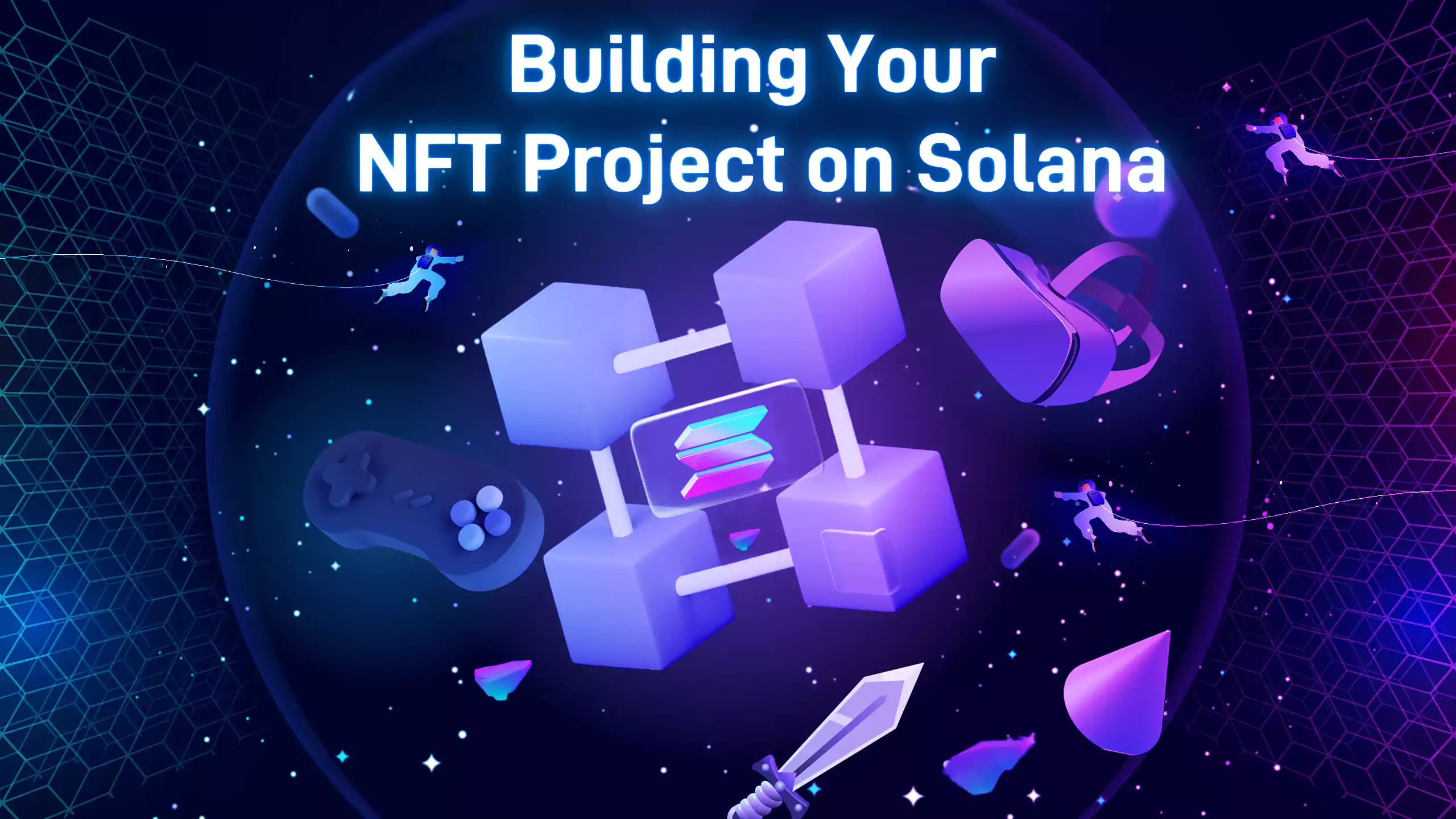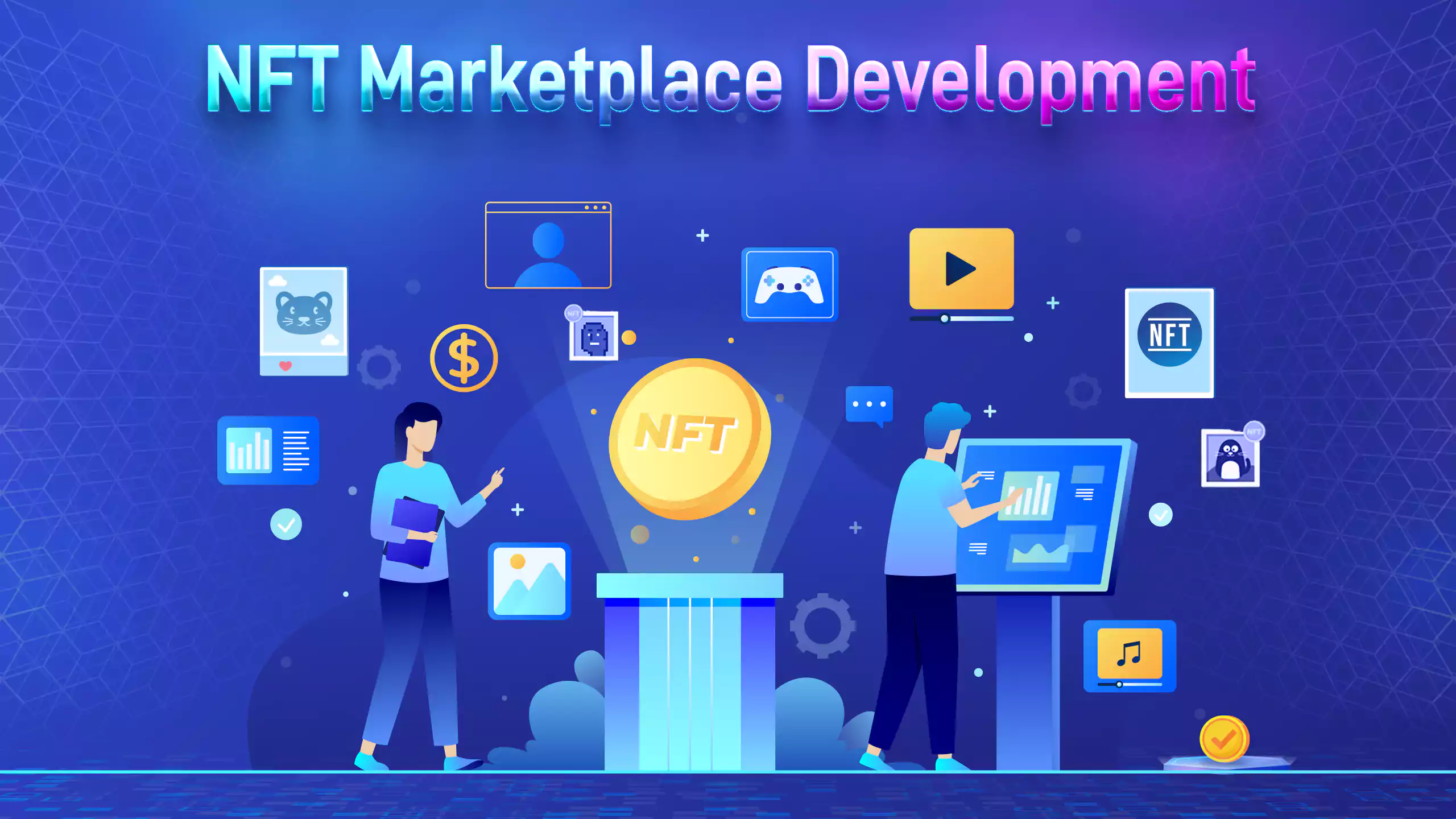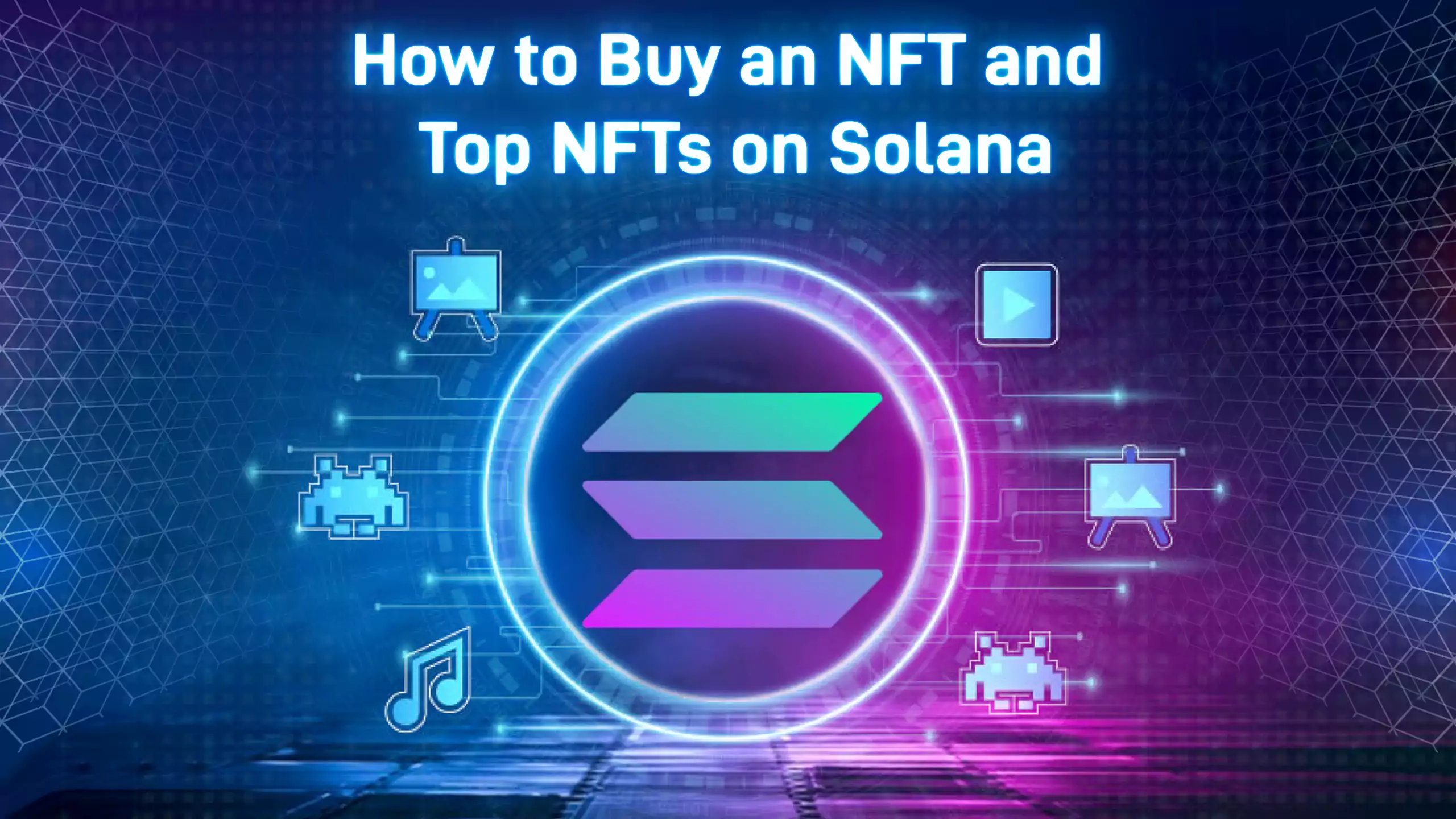There is hardly anyone with a smartphone today that has yet to hear about NFTs. The concept changed the way we create and monetize content and spurred a crypto rush between 2021 and now. Right now, there are probably over 50,000 NFT sales going on somewhere on the blockchain.
If you are a creator and want to jump on the NFT bandwagon, there are many ways to get your project out there. One of them is using the Solana blockchain.
What is the Solana Blockchain?
Solana (SOL) is a decentralized, high-speed blockchain that can execute thousands of transactions per second. It is a programmable blockchain protocol that aims to achieve high-speed transactions while maintaining high-grade security and its key feature of decentralization.
The network employs a new proof-of-history in addition to the proof-of-stake consensus technique. The native token of the blockchain, SOL, is used for transaction fees and can also be staked. Today, Solana network is a strong competitor to Ethereum.
In 2017, Anatoly Yakovenko, an ex-contributor to Qualcomm and Dropbox, created and announced the Solana Blockchain when he published the Solana whitepaper. The Solana whitepaper is the first documented reference to proof-of-history, which is presented as a revolutionary method of timekeeping for blockchain distributed networks.
Working with Eric Williams and Greg Fitzgerald, Solana's CTO, Anatoly hopes to build Solana into a trustless and distributed protocol that addresses the flaws that plague the Bitcoin and Ethereum blockchains.
In February 2018, the team released the Solana platform testnet. Solana Labs, the business behind the platform, was originally known as Loom. The name was modified afterwards to avoid confusion with Loom Network, a multichain interoperability solution.
Differences Between Ethereum and Solana Blockchain
Blockchain technology makes it possible to decentralize transactions. However, different blockchains have distinct features that make one preferable over another in certain scenarios. The Ethereum blockchain came at a time when the blockchain industry needed faster and more efficient transactions. This explains why It was also the first blockchain to feature smart contacts. Then, other blockchains like Solana came along.
The major challenge faced by the Ethereum blockchain includes the slow rate of processing transactions, the amount of energy required and the exorbitant charges known as gas fee. The Ethereum network is, no doubt, robust and supports a plethora of valuable projects run by millions of people all over the world. However, it manages only about 15 transactions per second.
This means a lengthy queue of unfulfilled transactions every hour, if we consider the number of people involved in Ethereum-based transactions per day. The ease Ethereum gives pales in comparison to a company like Visa, which regularly handles tens of thousands of transactions at any time, which is what Solana hopes to correct.
These are some of the differences between the two:
Ethereum
Ethereum 1.0 (the one we are using presently) relies on a Proof-of-Work (PoW) mechanism, the same as the mechanism that is used by Bitcoin's blockchain. The network, then, is secured by hundreds of thousands (if not millions) of miners who participate in the process of consensus by “staking” their computing power/hardware.
While this ensures that the network always remains decentralized and the barrier to entry to participating within the network is high, it also leads to reduced performance on the network as it is unable to process many transactions per second.
The fundamental difference between Solana and Ethereum is the underlying consensus mechanism. It's called Proof-of-History (PoH), and it entails a series of computing procedures that cryptographically identify the temporal interval between two events.
This is furthered by including timestamps in all transactions and keeping track of their orders. This order sequencing differs significantly from those of Bitcoin and Ethereum, which do not place transactions in a timely manner.
The second feature that distinguishes Ethereum from Solana is its "stateful" character. It means that all of the network's transactions are stored in a single state, and if a new transaction occurs, the entire network (or all miners) must update their copies of the network to reflect the new transaction.
Solana
Solana has a 'stateless' architecture, which, as previously mentioned, helps to reduce total memory consumption. Because each transaction does not require changing the network's whole state, they can be carried out in any order. This is one of the aspects that contribute to Solana's scalability.
Solana uses a modified version of pBFT called Tower Byzantine Fault Tolerance (BFT) (practical Byzantine fault tolerance). This eliminates the requirement for nodes to interact in real time, resulting in increased overall efficiency.
In addition, Solana employs the Gulf Stream, which, according to the company, is a mempool-less transaction forwarding standard that pushes transactions to the network's edge. This allows network validators to complete transactions considerably sooner than expected. The network can now process more than 50,000 transactions per second (TPS).
Steps to Building an NFT Project on Solana
Solana uses Rust to write smart contracts rather than Solidity or another specialist language. In a recent study of software developers, 90% of respondents claimed they currently use or have used Rust in the past. With that number, Solana has access to a large pool of developers who are already familiar with the blockchain's native language.
If you're considering building your own NFT platform, wallet, or other project, Solana's low costs and excellent transaction speed make it a fantastic place to start.
You'll need to download the Solana Client and establish a wallet there to mint your own NFT on the Solana network. You can also use an existing wallet generated on other blockchains. Then, in order to mint your own NFT, you'll need to create a new address in the Solana wallet and send some SOL to that address.
It can take up to 3 hours for the Solana network to confirm your transaction once you've finished sending SOL to your address. You will be able to mint NFTs during this period, which will be generated automatically once the transaction is confirmed.
Set up a Solana wallet
To begin, download and install the Solana Tool Suite, which is required to construct your wallet. Open the terminal (on Linux/Mac) or Command Prompt once the software is installed (on Windows). Now, in the terminal/Command Prompt, navigate to the desktop and run the command below to create a folder to hold your NFT crypto data.
cd Desktop
mkdir SolanaWallet
solana-keygen new — outfile SolanaWallet/my-keypair.json
Finally, create a password-protected wallet. Your new Solana wallet is now available. You will now be given a public address, which will consist of a long string of numbers and letters. Save this PUB KEY because you'll need it multiple times later.
You'll need some SOL, the Solana blockchain's currency, now that you've got a wallet. To receive a free SOL on the devnet, type the following command:
solana airdrop 1 YOUR_ADDRESS — url https://api.devnet.solana.com
Create the token
At the initial phase, you must configure your system to use the devnet:
solana config set — url https://devnet.solana.com
Then, on your desktop, point to the path of your keypair.json file:
solana config set — keypair SolanaWallet/my-keypair.json
The last step is to create your token using:
spl-token create-token
You've successfully created a token. Like your public address, your token is a string of numbers and letters. So, how should you keep your new token safe in your wallet? To begin, you must create an account:
spl-token create-account YOUR_TOKEN
It's time to mint some tokens after you've set up an account in your wallet to accept all of the tokens.
spl-token mint YOUR_TOKEN 360
You just added 360 new tokens to your account and can sell or send them to anyone. To add additional tokens to your collection, repeat all of the above commands and create as many tokens as you like. Remember that the JSON file contains the unique details of your NFT. An easier way to create an NFT project on Solana is to use the NFT marketplace.
Create an account on an NFT marketplace that supports Solana blockchain-built NFTs, such as Solanart. You can then link your Solana wallet to this account and upload the files you want to make into NFTs, assuming you are creating a collection. Add the necessary details and select the mint option and in a moment, you have your NFT project in the market.
The dynamics that go into building a successful NFT project transcend just the art. You would need a team of enterprising individuals.
- An artist
- Software engineer
- Social media manager
- Community Manager
The artist designs your NFT art. It could be an image, a video clip or whatever medium you choose. Most NFT projects are images or illustrations. It is easier to generate thousands of images from a marked set of layers than to create thousands of different images.
The software engineer creates the website where you use storytelling to win the hearts of prospective buyers.
The social media manager is in charge of your online presence and plays a crucial role of keeping people updated on the progress of your project. A good social media manager will engage the audience and create a sense of value in your project.
The community manager is just as important as the social media manager. NFT projects are nothing without communities backing them. You will need someone that is good at moderating a community like Discord and ensures your audience is informed on the project and interested.
After this, you should determine your distribution strategy, whether public minting, Dutch minting, auction or whitelisting.
After checking these, the next step is to go live with the project.
Conclusion
Building an NFT for the Solana ecosystem is easier and cheaper than building on the Ethereum network. Although the Etherum blockchain has a larger market and projects, it may take only a little while before Solana NFTs become the rave, thanks to their ingenuity and super-scalable protocol.






